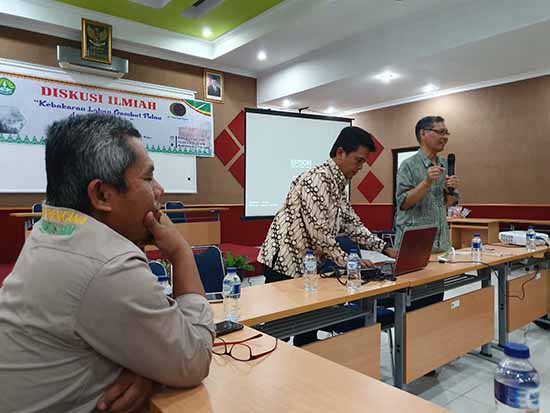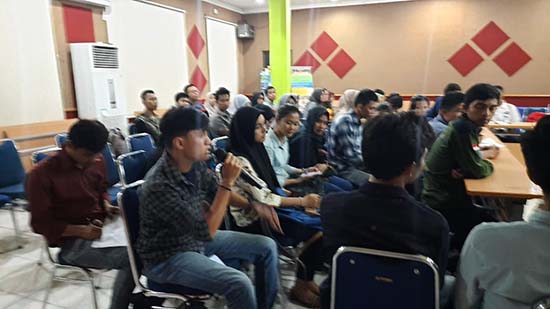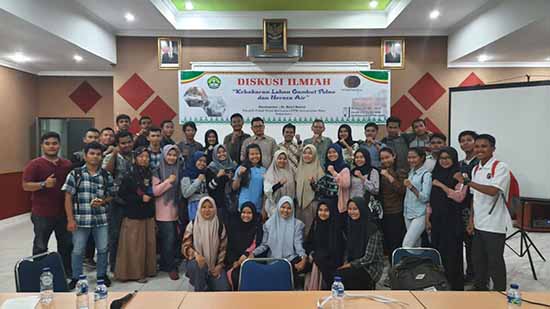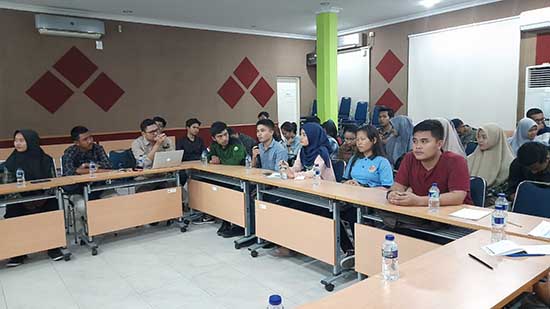unri. ac.id Peatlands are not only found in the Riau Province which is on the mainland of Sumatra Island, but also in several islands that are part of the archipelago, such as Bengkalis Island, Padang Island, Tebing Tinggi Island, and Rangsang Island.
Given that the size of these islands is smaller than the Riau area on the island of Sumatra, the expanse of peat land on the island itself is also much smaller. This is thought to make it more fragile to various forms of disturbance, especially hydrological disturbances.
Dr Besri Nasrul Research Center for Disaster Studies (PSB) Institute for Research and Community Service, University of Riau (LPPM Unri) has studied the relationship between the capacity of the island's peatlands to store water and the level of vulnerability to drought which has implications for increasing fire vulnerability.
Based on the results of his research on Tebing Tinggi Island, Besri reveals how human activities in the last 20 years have had a very significant impact on the capacity of the island's peatlands to store water.
In the monthly scientific discussion forum "PSB Peat Circle " which was hosted on November 31, 2019, yesterday, Besri conveyed that there were indications of potential disasters that were quite astonishing. According to his study, the peatlands of Pulau Tebing Tinggi can be divided into five sub-KHG (Peat Hydrological Units), each of which has at least one peat dome, which is the land surface with the thickest peat layer.
Citing data from the Ministry of Environment and Forestry (2015), Besri stated that the area of peatland on this island reaches approximately 123,900 ha or about 90.5 percent of its land area, and 65 percent of this peatland is deep peatland, which has a peat thickness of 3-11. m.
As is known, peat has the ability to absorb and store water up to hundreds of percent of its own volume. Therefore, the peatlands found on this island, despite their small size, are natural infrastructure that plays a very important role in maintaining the local water balance.
“Unfortunately, the balance of this balance is now very disturbed. The number of canals built to divide the sub-KHG which has a thick layer of peat has damaged the structure of the existing peat domes,” explained the researcher who has just finished his doctoral study at Gadjah Mada University (UGM).
This causes the capacity of peat domes to absorb and store water to drastically shrink. Besri, explained that in its natural condition, peat domes can absorb and store rainwater so that they can keep the peat wet for 2.79-2.85 months after the rainy season is over, so that the peat never dries up. On the other hand, in the current state of the art, this ability is shortened to only 1.82-1.88 months.”
In such circumstances, the researcher warns “If El Nino hits Tebing Tinggi Island, the fire hazard level will increase rapidly, because the peat dries quickly. What is more worrying is that if a peatland fire occurs, it will be difficult to extinguish it because there will not be enough water to extinguish the fire.”
The source of the problem from peat dome damage is none other than the construction of canals that remove most of the water absorbed by the peat domes during the rainy season. This makes the area of peat domes that are supposed to be water reservoirs to turn into the driest parts of Tebing Tinggi Island during the dry season.
Therefore, Besri emphasized the need to take strategic steps to prevent the destruction of peatlands on Tebing Tinggi Island, the impact of which would be very detrimental to humans.
He explained “The first strategic step is to expand the expanse of land that becomes a peat protected area. Do not only protect the top of the peat dome, but also the slopes and foot of the dome. If this is taken, it is estimated that the five sub-KHGs on the island will be able to store water to deal with drought for up to 10-13 months.”
“The second strategic step is to systematically block all canals in the expanded peat protected area at the right points, so that the rate of water discharge from the peat dome can be reduced to the lowest possible level,” concluded the researcher. (unrinews editor. rls source: am/psb/lppm/unri. photo: special) ***





